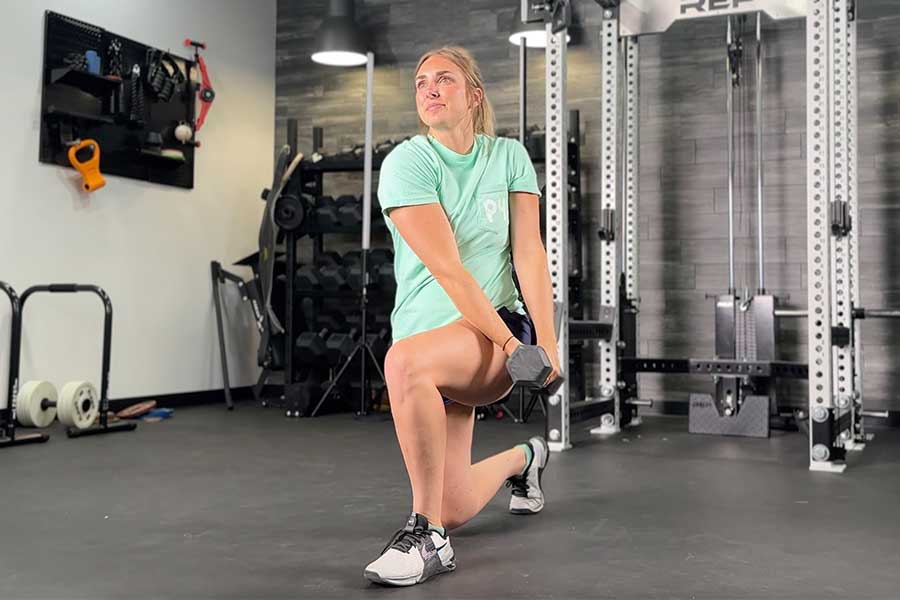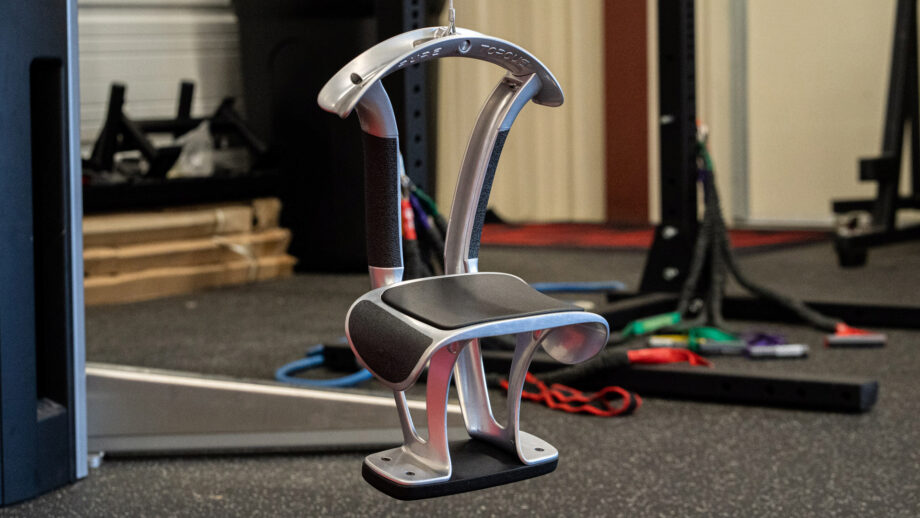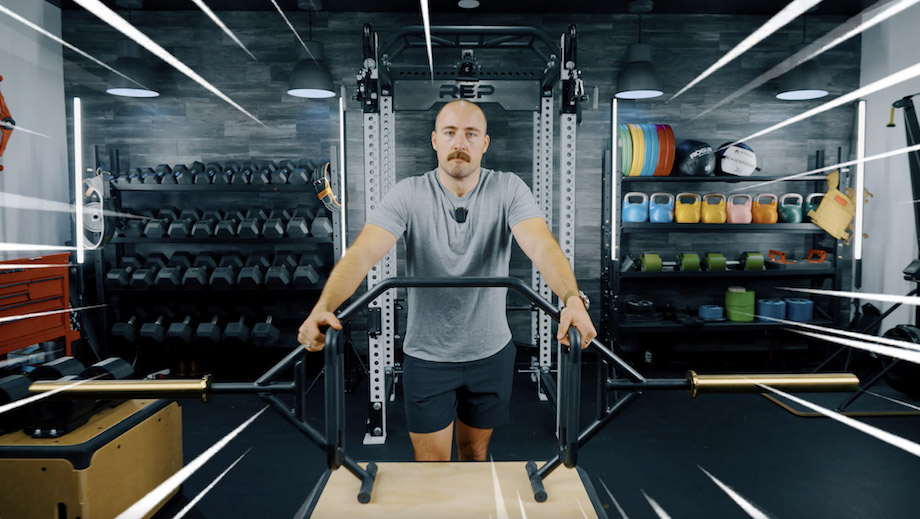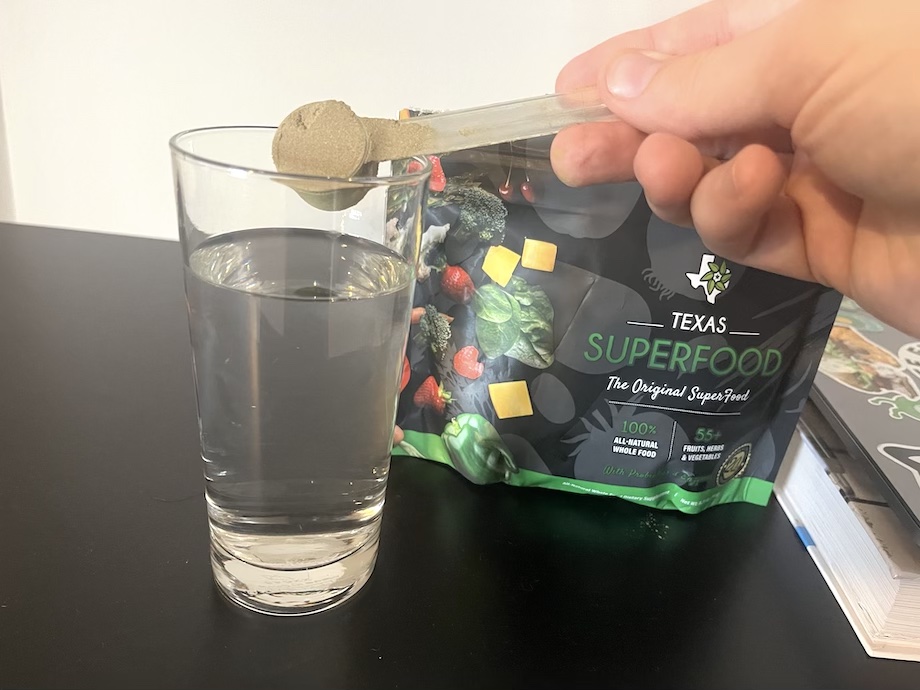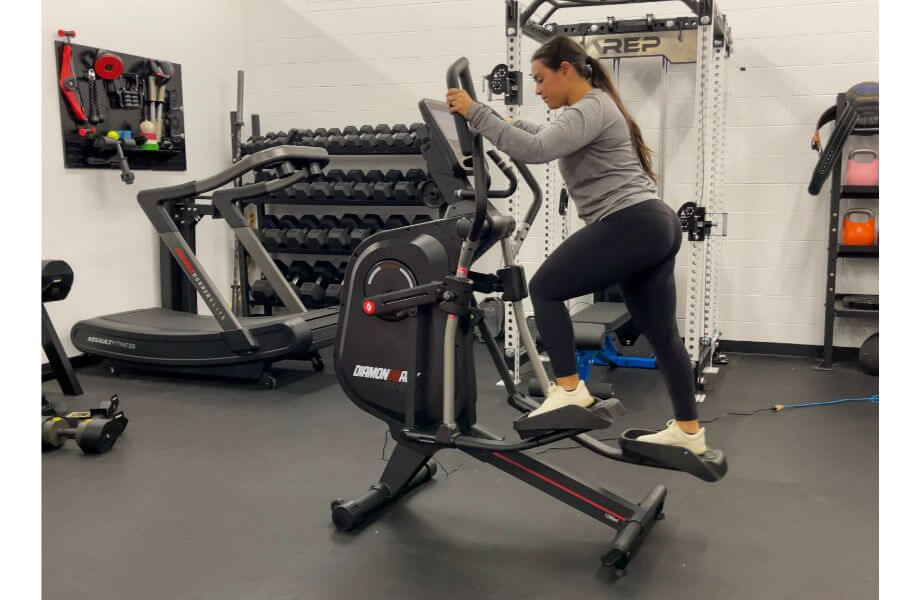Have you ever thought to yourself, as you lie on the gym floor between sets of crunches, that there’s got to be a better way of building core strength, stability, and six-pack abs?
Well, we’re here to confirm what you’ve been hoping to hear for years—yes, there is definitely a better way to build your abdominal muscles beyond performing crunches and sit-ups after every workout forever. And all you need is a single dumbbell to get the job done.
Amanda Capritto, CPT, CES, CNC, CF-L1, and GGR Senior Staff Writer, provides step-by-step instructions on how to perform various core exercises using a dumbbell, as well as outlining a dumbbell core workout that will have you well on your way to stronger and more pronounced abdominal muscles.
RELATED: Best Dumbbells For 2025
Workout Format
Many mat ab exercises, like crunches, sit-ups, and leg raises, require moving from one exercise to the next with little to no rest for approximately five to ten minutes total. Ours is going to be a little different.
RELATED: Best Exercise Mats
“Our dumbbell core workout uses a few slower movements, like the dumbbell windmill and dumbbell Turkish sit-up,” says Amanda Capritto, CPT, CES, CNC, CF-L1. “For these, form is paramount, and rushing through will do you no favors for that. So, try to spend as much time as needed to get the movement pattern right, then rest as needed to ensure it doesn’t fall apart as you fatigue.”
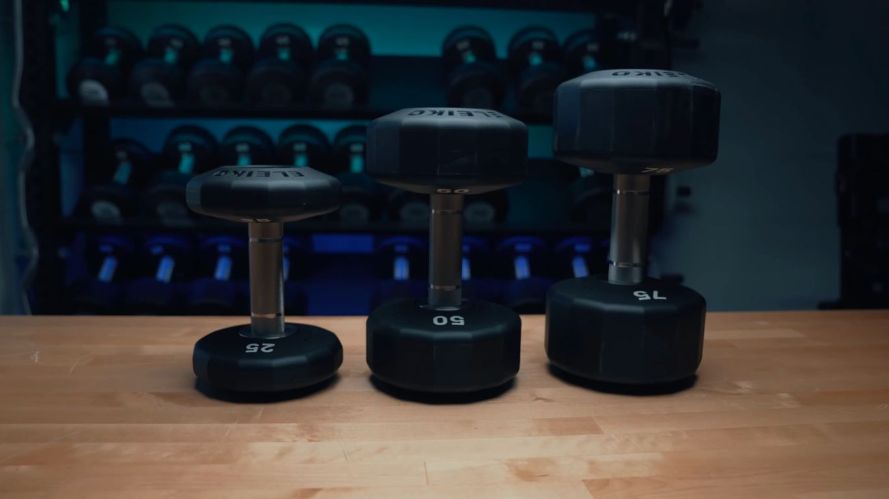
We recommend approximately one minute between exercises and sets, but beginners should feel free to take a longer breather if it’s the difference between sloppy and pristine reps.
Here’s a dumbbell core workout that will help you build a strong and stable core.
| Exercise | Sets | Reps |
| Dumbbell Windmill | 2 to 3 | 6 to 12 |
| Dumbbell Woodchop | 3 to 6 | 8 to 12 |
| Dumbbell Plank Pull-Through | 3 to 6 | 8 to 12 |
| Dumbbell Turkish Sit-Up | 2 to 3 | 6 to 12 |
| Dumbbell Russian Twist | 3 to 6 | 12 to 20 |
| Weighted Side Plank | 2 to 3 | 30 to 60 seconds |
RELATED: How Many Reps to Build Muscle
The Exercises
Are you ready for a new way to target your midsection? These movements work your upper abs, lower abs, the obliques on either side of your body, and more! Check them out!
RELATED: Lower Ab Workouts
Dumbbell Woodchop
Why we love it: “The woodchop exercise is functional fitness at its finest,” says Amanda. “By imitating an actual woodchopping movement, you’re activating muscle groups including the shoulders, hips, quads, calves, and, of course, the core muscles.”
How to do it:
- Grab a dumbbell with both hands and hold it in front of your body with straight arms.
- Standing with your feet shoulder-width apart, twist your torso to one side, raising the dumbbell up and across the body as you rotate.
- Bring the dumbbell up above your shoulder, then twist back to center and over to the opposite side, moving the dumbbell across the body diagonally as you twist.
- Repeat the movement as needed, then switch sides and repeat the set.
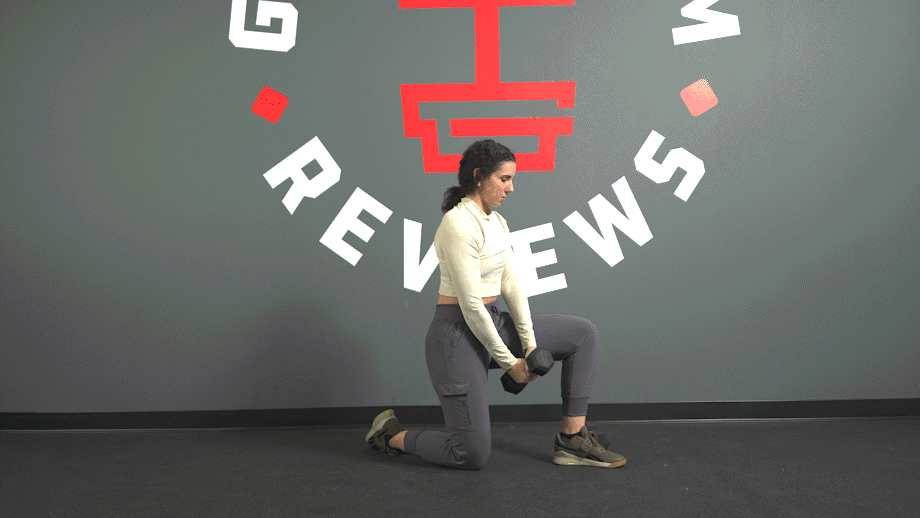
Dumbbell Windmill
Why we love it: The windmill isn’t just a killer ab exercise; it’s also incredible for improving stability, mobility, and flexibility in the hips and shoulders.
How to do it:
- Start in a standing position with feet shoulder-width and a dumbbell in your left hand.
- Raise your arm overhead and slowly turn your right foot outward.
- Slide your right hand down your right leg, keeping the left arm and dumbbell overhead.
- Touch the floor with your right hand, pause, then return to the starting position.
- Repeat as needed, then repeat with the dumbbell in your right hand.
RELATED: Kettlebell Windmill
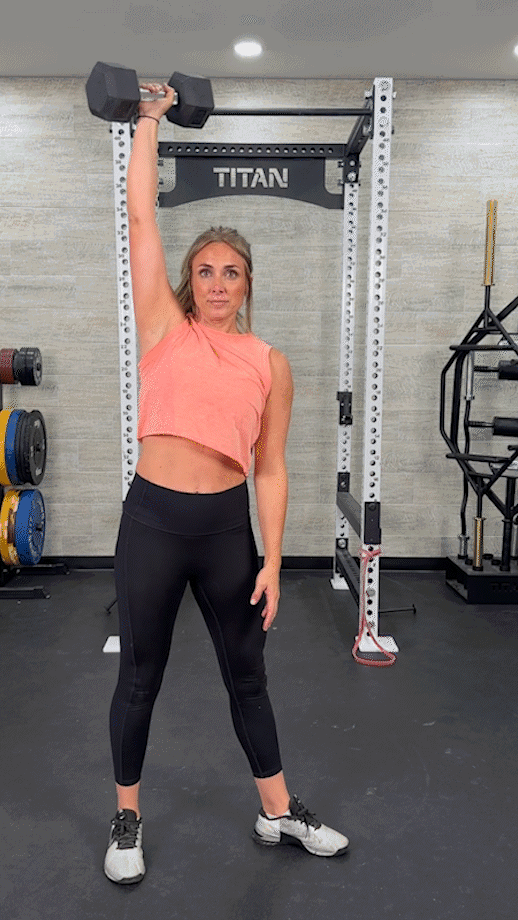
Dumbbell Russian Twist
Why we love it: Russian twists rank as one of the best oblique exercises to add into any ab workout, and using a dumbbell intensifies the overall impact. They also target the hip flexors, enhancing hip mobility and flexibility.
How to do it:
- Sit on the floor with your feet flat and knees bent.
- Hold a dumbbell with two hands in front of your body and lean back slightly.
- Twist your upper body to the left side, keeping the lower body straight.
- Bring the dumbbell toward the floor and lightly tap the floor.
- Twist back to the right and all the way to your right side, lightly touching the floor again.
- Repeat as needed, making sure you perform an equal number of reps on each side.
RELATED: Hip Flexor Exercise
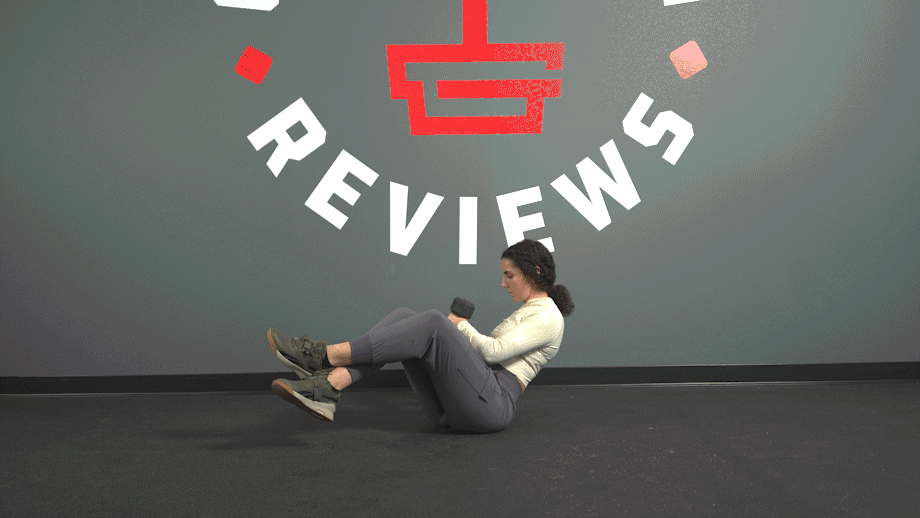
Dumbbell Turkish Sit-Ups
Why we love it: The Turkish sit-up, like the Turkish get-up, requires moving slowly and keeping control at all times, while primarily targeting the glutes, hamstrings, and lower back, as well as the triceps and lats of the upper body.
RELATED: Dumbbell Triceps Workout
How to do it:
- Lie on your back with a dumbbell in your right hand, your right arm held straight up, your right knee bent, and your right foot flat on the floor. Your left leg should be fully extended and your left arm will be flat on the floor forming a 45-degree angle with the body.
- Push through your right foot and left arm to lift your upper body and come up onto your left elbow. Keep the right arm held overhead and your eyes on the dumbbell.
- Push with the left hand to sit up further.
- Hold the position briefly, then reverse the movement to return to the floor.
- Repeat as needed, then switch sides and repeat the set.
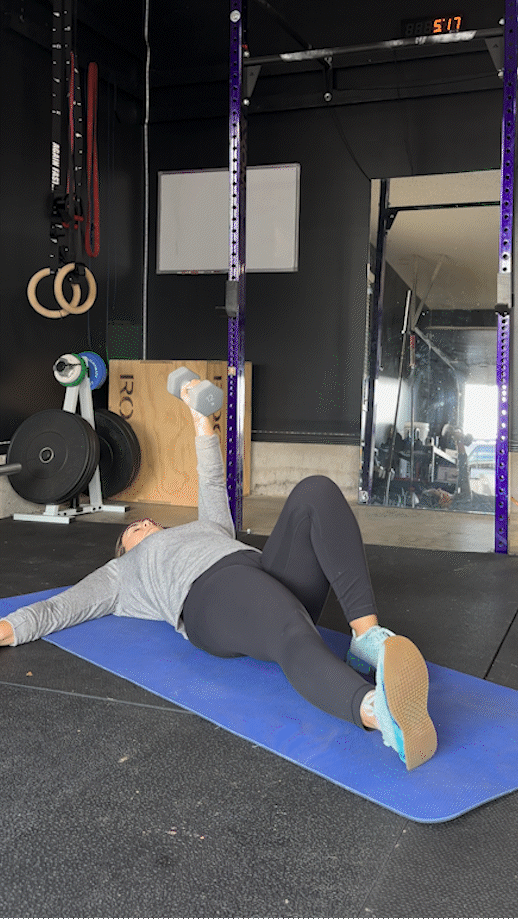
Dumbbell Plank Pull-Through
Why we love it: “Your run-of-the-mill front plank is effective, but can be monotonous,” says Amanda. “Sprucing things up with a plank variation like the dumbbell plank pull-through adds some spice to the session, while adding resistance makes the exercise more effective.”
How to do it:
- Get into a high plank position and put a dumbbell on the floor next to your right shoulder.
- Reach under your body with your left arm and grab the dumbbell.
- Move the weight from the right side to the left, placing it down next to your left shoulder.
- Place your left hand back down, then reach across with your right arm next.
- Move the weight from the left side back to the right, then put your right hand back down.
- Repeat as needed, ensuring an equal number of repetitions for each side.
RELATED: Plank Exercise Variations to Spice Up Your Core Work
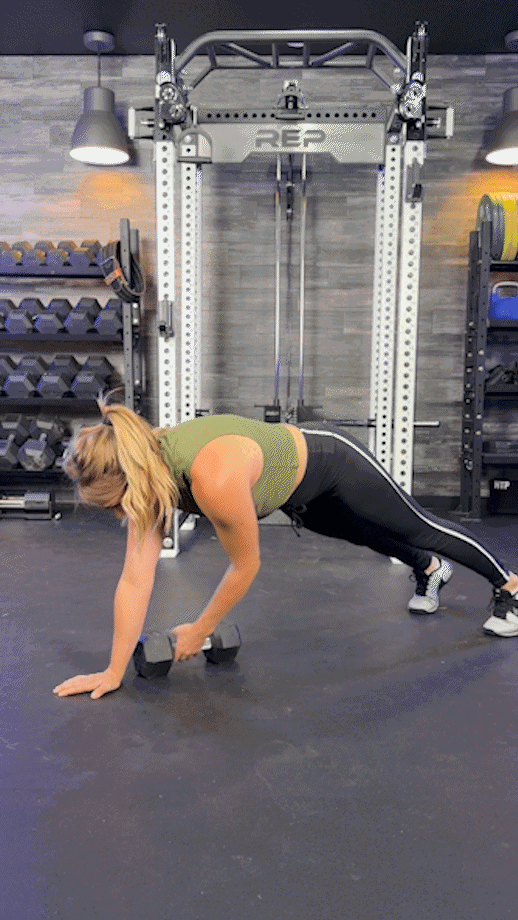
Weighted Side Plank
Why we love it: Holding a dumbbell during this isometric exercise increases muscle activation, helping you sculpt a chiseled midsection and build a strong core.
How to do it:
- Prop up your body on your left side, keeping both feet together.
- Grab a dumbbell in your right hand, then raise your hips off the floor, keeping your core braced, and extend the right arm to the ceiling.
- Hold for the desired duration, then come back down.
- Switch sides and repeat.
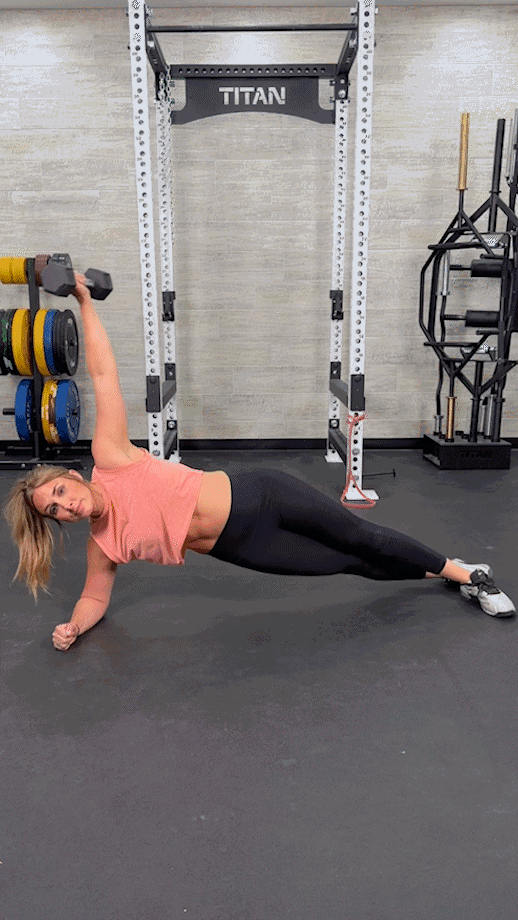
Dumbbell Core Workout: Final Thoughts
Bodyweight exercises are a popular way of training your core, but studies show1 that using free weights and resistance will provide more bang for your buck when it comes to building core strength and stability.
Give our dumbbell core workout a try and see for yourself!
Dumbbell Core Workout: FAQs
Can you train your core with dumbbells?
Beginners often believe the only way to work out their abs is by doing crunches and sit-ups after every single workout, but there are actually many ways to activate the rectus abdominis, transversus abdominis, and obliques.
Adding a dumbbell or kettlebell to standard bodyweight ab exercises increases muscle activation and adds resistance, enabling progressive overload and making it an all-around efficient way of training your core.
Does a dumbbell workout reduce belly fat?
“It’s a common misconception that performing ab exercises will reduce belly fat, but it’s unfortunately just a myth,” says Amanda Capritto, CPT, CES, CNC, CF-L1, and GGR Senior Staff Writer.
According to a 2011 study published in the Journal of Strength and Conditioning Research2, “Abdominal exercise training alone was not sufficient to reduce abdominal subcutaneous fat and other measures of body composition.”
“The best way to reduce adipose tissue in the midsection involves a comprehensive approach, including cardio, strength training, ab training, and, most importantly, a well-balanced diet,” adds Amanda. “If you’re having a hard time reaching your goals, consider working with a personal trainer and certified nutritionist.”
RELATED: How To Lose Body Fat
Which dumbbell exercise is best for abs?
Our guide includes some of the best dumbbell exercises—dumbbell wood chops, windmills, Russian twists, Turkish sit-ups, and plank variations—for targeting and training the abdominals, but are there others that are noteworthy?
As a matter of fact, just about any dumbbell exercise performed from a standing position will require bracing the core to hold a strong posture, providing activation to the abdominal muscles.
So, that means deadlifts, overhead presses, and, heck, even biceps curls will work your abs, so you can get ab training even during a full-body dumbbell workout!
References
1. Martuscello JM, Nuzzo JL, Ashley CD, Campbell BI, Orriola JJ, Mayer JM. Systematic review of core muscle activity during physical fitness exercises. J Strength Cond Res. 2013;27(6):1684-1698. doi:10.1519/JSC.0b013e318291b8da
2. Vispute SS, Smith JD, LeCheminant JD, Hurley KS. The effect of abdominal exercise on abdominal fat. J Strength Cond Res. 2011;25(9):2559-2564. doi:10.1519/JSC.0b013e3181fb4a46


